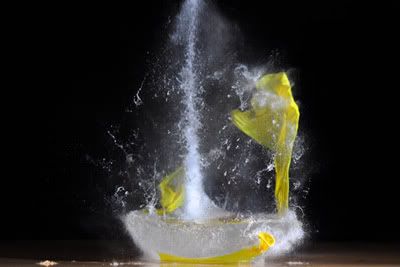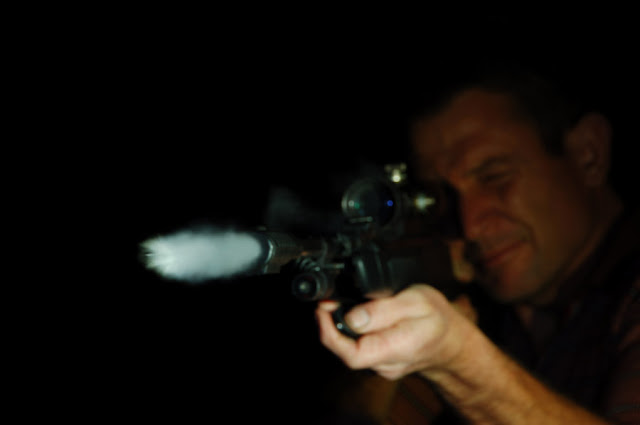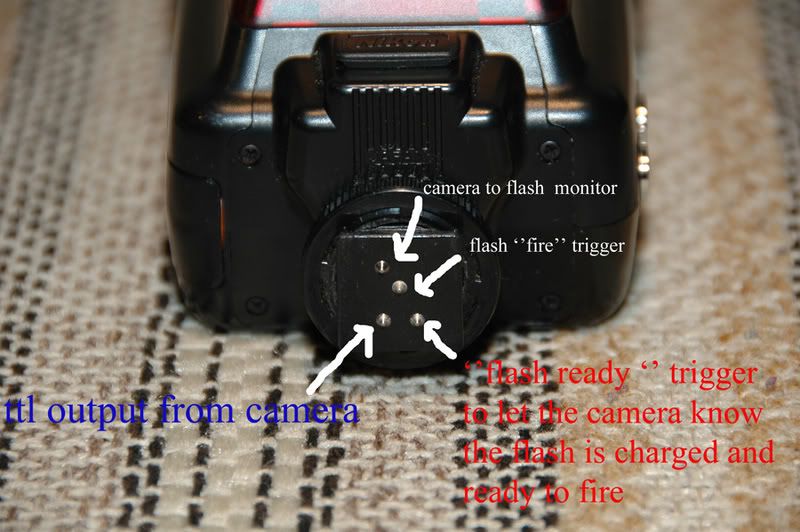Tuesday, May 4, 2010
High speed photography
If you want to freeze action you are better off using flash than shutter speed for two reasons :
1.) Flash can do faster speeds . Most cameras these days can go to about 1/4000th sec , some to 1/8000th .
Flash , with a Nikon SB800 , at 1/128th power fires as fast as 1/41600th sec .
2.) Flash can fire as fast as you need it to , shutters have a slight delay before they fire .
If you have the luxury of time then you can wait until it gets dark - or use a very dark room depending on what you will be "shooting" .
I use a sound activated flash trigger and if you click the link you will see how you can do it yourself .
The main principle of capturing the action with flash is ...... not to capture the ambient lighting as well .[ Ambient is any other light that isn't flash ] .
If you are photographing at night you can get a picture in moonlight . I took this picture by the light of the full moon at iso 800 , F4 and 25 seconds ......
So if you are shooting at night and use these settings it can look like daylight . Drop back to iso 200 and you get 1/4 of the light . Go from 25 seconds to 2.5 seconds and you have 1/10th of that 1/4 of the light . Now close the aperture to F16 and you have 1/16th of 1/10th of 1/4 of that light - in other words a black picture if there is no flash .
So , we choose the lowest iso , that's iso 200 on my D50 , and a small aperture [ F9-16 ]which gives us greater depth of field , cuts out the ambient , but also requires more flash power .
The trouble with higher flash power is that the speeds are slower so you rather end up moving the flash as close as possible with the lowest power possible .
The Nikon SB800 has the following flash speeds ...
1/1 full output = 1/1050th sec
1/2 output = 1/1100th sec
1/4 output = 1/2700th sec
1/8th output = 1/5900th sec
1/16th output = 1/10900th sec [this is as far as the old SB24 goes]
1/32nd output = 1/17800th sec
1/64th output = 1/32300th sec
1/128th output = 1/41600th sec
Most of the time I shoot with the old SB24 at 1/16th power [1/11000th sec ] but when I need really fast speeds , as with a light bulb breaking , I use two SB800s as close as possible at 1/128th power .
Remember the inverse square law , if you move the flash twice as close it appears 4X as powerful .
Once you have your 'studio' set up and your camera setting right you have to decide how you are going to trigger the flash .
In the beginning I used a normal micro switch nailed to a board on a hinge
All you need to do to trigger a flash is join the centre pin to the side pin , whether it's with a relay or a switch or simply touching two wires together .
You can wire it up to a relay or toggle switch and use a sound switch or a laser trigger or motion sensor
......... whatever triggers an electronic circuit can be used to trigger your flash .
The sound activated switch is the most useful to me since it can fire with a slight sound and much of what I do causes some noise :) .
If it's legal where you live an air rifle makes a good noise and gives some decent effects .
First you decide what the slowest shutter speed is that you can work with without getting unwanted light in the picture . I usually need about two seconds after the shutter opens to aim and fire before the shutter closes again . At iso 200 and F11 aperture if the flash doesn't fire the image comes out black , the flash is the only light that contributes to the exposure .
Once you have your settings where you want them you turn on the flash , try 1/16th power to start with - if it isn't going to be bright enough you can increase the power if you don't mind 'slower' speeds than 1/11000th sec . The other option is to keep moving the flash closer or zoom in the flash head until the image is bright enough .... before you start actually destroying anything and getting under-exposed images that could have looked stunning with the right light .
The positioning of the mic is important , if it is right under the barrel the flash can fire so soon that you end up with a picture of a balloon with a hole through it , before it has time to burst .
Moving the mic 4 metres away made the flash fire too late
Moving the mic 2 metres away gave me the right 'moment' ....
Different placing of the lighting , different 'shooting' angles and 'luck' can give very different images
Anything that makes enough noise to trigger the switch can give interesting results ....
As mentioned the air rifle does a good job ..
On a wooden box a machete makes enough noise as well ...
So remember , if it is dark enough the shutter speed doesn't matter much - the flash controls the exposure .
When you have your iso and aperture right choose your flash power .
If it isn't powerful enough move it closer .
If you don't need such a fast speed use more flash power .
If you need the speed of the lowest power then you will have to zoom the flash head out [ to 85mm on the SB24 ] , move the flash as close as possible without being in the picture and then if it still isn't bright enough you will have to open the aperture up a bit more or increase the iso to brighten the image .
When I use two flashes I use the SB26 with its optic trigger that fires as soon as it detects another flash ....
You can also buy a cheap optic trigger and I have tested these down to a 1/4000th sec shutter speed - that's how fast they react to another flash .
Subscribe to:
Post Comments (Atom)






















No comments:
Post a Comment